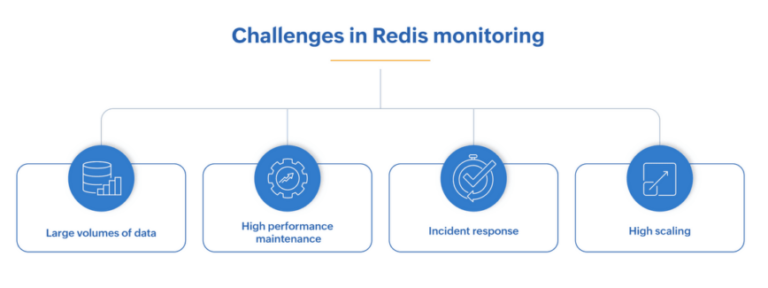
Digital innovation refers to using technology to come up with new ideas and solutions that make life better. It’s about using computers, the internet, and other digital tools to create things that are useful and cool. Think of smartphones, smartwatches, and apps that help us do things faster and easier. Digital innovation isn’t just about gadgets; it’s also about making businesses work better. For example, online shopping, digital banking, and video calls have changed the way we shop, bank, and communicate. It’s like finding new ways to solve problems and make life more convenient using technology. Digital innovation is all around us, and it’s constantly changing and improving. So, whenever you use a new app, device, or service, you’re experiencing digital innovation in action.
Digital Innovation – An Overview
Cloud environments provide businesses with the ability to scale their resources up or down according to their needs. This scalability allows organizations to efficiently manage varying workloads and accommodate growth without the need for significant upfront investments in infrastructure. Additionally, cloud environments offer flexibility, enabling businesses to quickly adapt to changes in demand or market conditions.
Cloud transformation involves the strategic adoption of cloud computing technologies and practices to modernize IT infrastructure, optimize business processes, and drive innovation. It goes beyond simply migrating to the cloud and encompasses broader organizational changes aimed at unlocking new opportunities and achieving strategic objectives.
Components of Cloud Transformation
Additionally, the collaborative nature of cloud solutions fosters cross-functional teamwork and knowledge sharing, facilitating a culture of innovation and continuous improvement within organizations. As a result, cloud transformation not only optimizes existing operations but also enables organizations to explore new business models, enter new markets, and stay ahead of the curve in an increasingly competitive digital landscape.
Scalability and Flexibility in Cloud Environments
Cloud transformation holds immense potential for businesses seeking to drive digital innovation, enhance competitiveness, and future-proof their operations. By understanding the components of cloud transformation, leveraging advanced cloud technologies, and embracing future trends and opportunities, businesses can navigate the complexities of cloud transformation and unlock new possibilities for growth and success in the digital age.
Access to Advanced Technologies (AI, IoT, Etc.) Via Cloud Platforms
Software as a Service (SaaS): SaaS delivers software applications over the internet on a subscription basis, eliminating the need for organizations to install, manage, and maintain software locally. Popular SaaS solutions include Salesforce CRM, Microsoft Office 365, and Google Workspace. By adopting SaaS solutions, businesses can reduce upfront costs, improve accessibility and collaboration, and benefit from regular updates and enhancements delivered by the service provider.
Collaboration and Data Sharing Facilitated By Cloud Solutions
Emerging technologies such as edge computing, server-less architecture, and quantum computing are poised to reshape the future of cloud-driven innovation. Businesses have opportunities to capitalize on cloud-enabled innovation by embracing emerging technologies, fostering a culture of experimentation and learning, and partnering with innovative startups and ecosystem players.
How Cloud Transformation Energizes Digital Innovation?
Cloud platforms offer access to a wide range of advanced technologies, including artificial intelligence (AI), Internet of Things (IoT), big data analytics, and more. By leveraging these technologies through cloud services, businesses can unlock new capabilities, improve operational efficiency, and drive innovation across various aspects of their operations.
Cloud solutions enable seamless collaboration and data sharing among teams and stakeholders, regardless of their geographical location. With centralized data storage and real-time communication tools, organizations can enhance teamwork, streamline workflows, and accelerate decision-making processes. Additionally, cloud solutions promote data accessibility and visibility, allowing stakeholders to access and share information securely from any device, at any time.
Server-less Computing: Server-less computing, also known as “Function as a Service (FaaS)”, allows developers to build and run applications without worrying about provisioning or managing servers. Platforms like AWS Lambda, Azure Functions, and Google Cloud Functions automatically scale compute resources based on demand, charging users only for the resources consumed while executing functions. Server-less computing enables organizations to reduce operational overhead, improve scalability, and focus on writing code rather than managing infrastructure.
Platform as a Service (PaaS): PaaS offers a platform for developing, deploying, and managing applications without the need to build and maintain underlying infrastructure. Platforms like Heroku, Microsoft Azure App Service, and Google App Engine provide developers with tools, frameworks, and runtime environments to streamline the application development process. PaaS solutions enable organizations to accelerate time-to-market, improve collaboration between development and operations teams, and focus on building innovative applications rather than managing infrastructure.
Today, many businesses use cloud transformation to innovate, faster work, and stay competitive in the fast-changing digital world. Navigating Cloud Transformation is like finding a way through a maze of changes in how businesses use technology. It’s about adapting to the shifting landscape of digital innovation by moving important parts of your business to the cloud. It helps businesses navigate through all the complicated elements of changing to cloud-based systems. By following this guide, businesses can make the most of cloud transformation and use it to come up with even more great ideas using technology.
Containers and Container Orchestration: Containers provide a lightweight, portable, and consistent environment for running applications, allowing developers to package their code and dependencies into a single unit that can run anywhere. Container orchestration platforms like Kubernetes and Docker Swarm automate the deployment, scaling, and management of containerized applications across clusters of machines. Containers and container orchestration enable organizations to achieve greater agility, scalability, and efficiency in deploying and managing applications in cloud environments.
Digital innovation encompasses the use of technology to create new value propositions, business models, and customer experiences. It involves leveraging emerging technologies such as artificial intelligence (AI), Internet of Things (IoT), and data analytics to drive growth and differentiation in the digital economy.
Infrastructure as a Service (IaaS): IaaS provides virtualized computing resources over the internet, allowing businesses to access and manage servers, storage, networking, and other infrastructure components on-demand. By leveraging IaaS solutions like Amazon Web Services (AWS), Microsoft Azure, and Google Cloud Platform, organizations can quickly provision resources, scale infrastructure up or down as needed, and reduce the costs and complexities associated with maintaining physical hardware.
Cloud transformation serves as a catalyst for digital innovation by providing organizations with the agility, scalability, and access to advanced technologies necessary to drive meaningful change. By migrating to cloud-based infrastructure, businesses can rapidly experiment with new ideas, deploy innovative solutions, and iterate on them quickly without the constraints of traditional IT environments. Cloud platforms offer a wealth of services and tools, such as artificial intelligence, machine learning, and big data analytics, empowering organizations to extract valuable insights from their data, automate processes, and develop personalized customer experiences.
By Nilima Shah
Cloud adoption offers numerous benefits for businesses, including cost savings, improved scalability, enhanced agility, and accelerated innovation. By embracing cloud transformation, businesses can harness the power of emerging technologies to develop new products and services, streamline operations, and deliver superior customer experiences.





